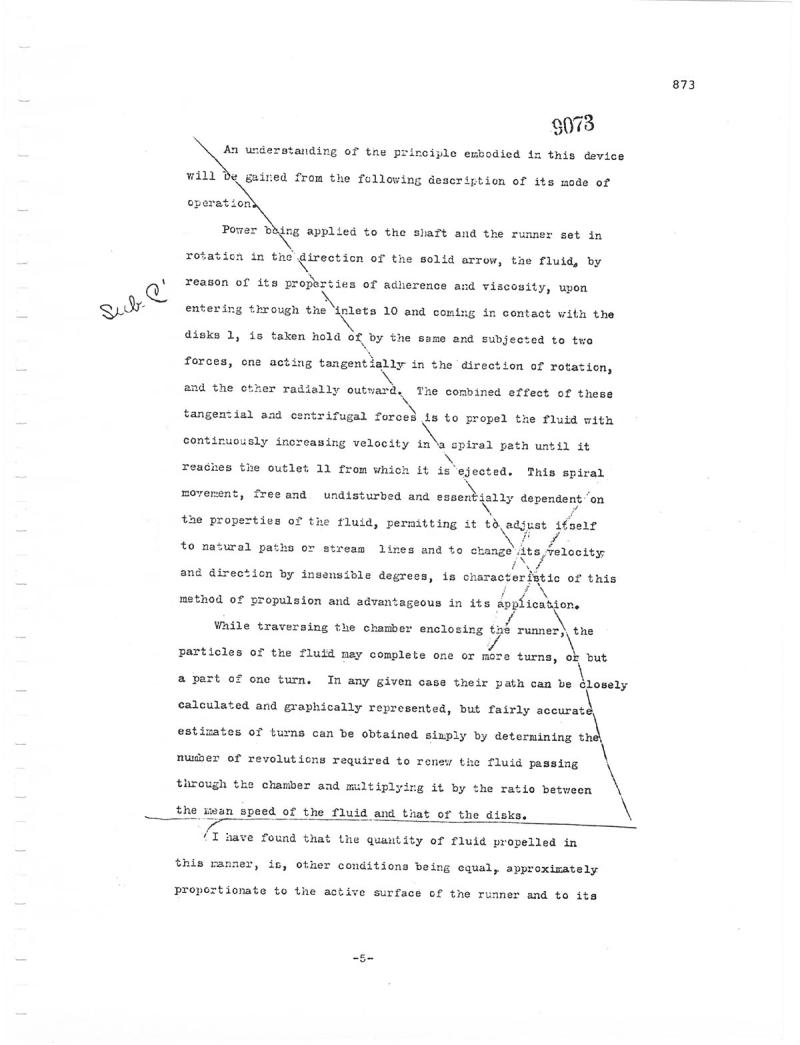
Nikola Tesla Patents
Nikola Tesla U.S. Patent 1,061,206 - Turbine Patent Wrapper Page 9
) J Sub l 9073 An understanding of the principle embodied in this device will be gained from the following description of its mode of operation Power being applied to the shaft and the runner set in rotation in the direction of the solid arrow, the fluid, by reason of its properties of adherence and viscosity, upon entering through the inlets 10 and coming in contact with the disks 1, is taken hold of by the same and subjected to two forces, one acting tangentially in the direction of rotation, and the other radially outward. The combined effect of these tangential and centrifugal forces is to propel the fluid with continuously increasing velocity in a spiral path until it reaches the outlet 11 from which it is ejected. This spiral movement, free and undisturbed and essentially dependent on the properties of the fluid, permitting it to adjust itself to natural paths or stream lines and to change its velocity and direction by insensible degrees, is characteristic of this method of propulsion and advantageous in its application. While traversing the chamber enclosing the runner, the the particles of the fluid nay complete one or more turns, or but a part of one turn. In any given case their path can be closely calculated and graphically represented, but fairly accurate estimates of turns can be obtained simply by determining the number of revolutions required to renew the fluid passing through the chamber and multiplying it by the ratio between the mean speed of the fluid and that of the disks. I have found that the quantity of fluid propelled in this ranner, is, other conditions being equal, approximately proportionate to the active surface of the runner and to its -5873
